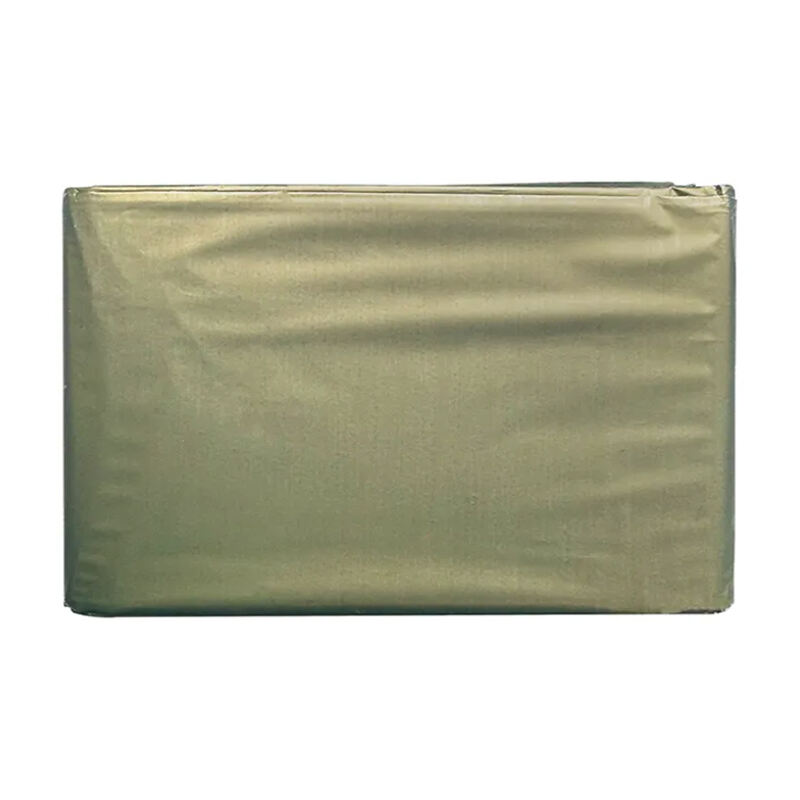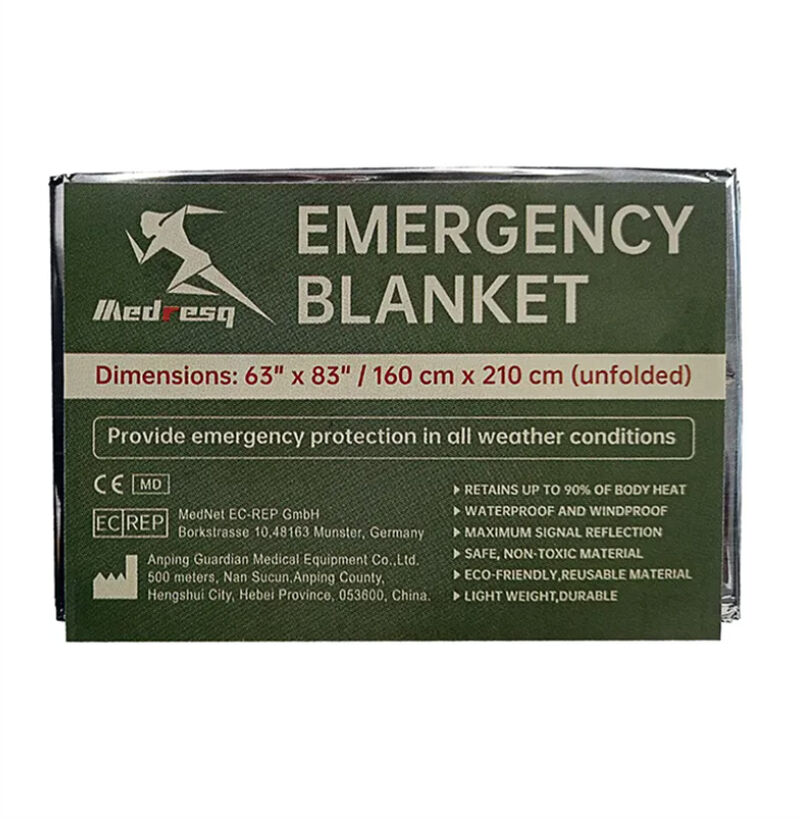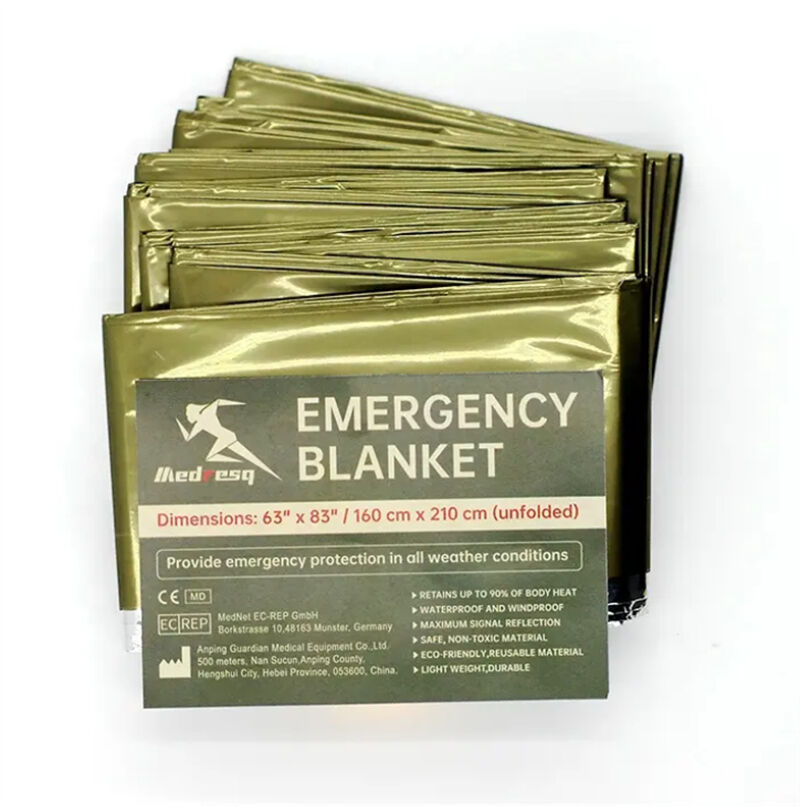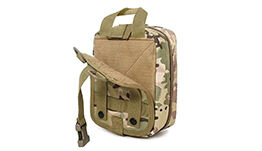Emergency Blanket: A Must-Have Thermal Protection Tool in Emergency Situations
In critical situations where survival is uncertain, maintaining body temperature is often as important as controlling bleeding or ensuring airway patency. One of the most cost-effective yet crucial tools in emergency preparedness is the emergency blanket. Known also as space blankets, thermal blankets, or Mylar blankets, these lightweight, compact sheets play a powerful role in preventing hypothermia and protecting individuals from harsh environmental elements.
What is an Emergency Blanket?
An emergency blanket is typically made of thin, heat-reflective plastic material like Mylar or PET. Developed originally by NASA for space missions, these blankets are designed to reflect a person's body heat back toward them, minimizing heat loss and providing thermal insulation. Despite their flimsy appearance, emergency blankets are engineered to withstand wind, water, and temperature fluctuations.
These blankets are widely used by paramedics, military personnel, outdoor survivalists, and civilians. Their portability and multifunctional nature make them an essential component in IFAKs (Individual First Aid Kits) and EMS medical equipment.
When and Why to Use an Emergency Blanket
Emergency blankets are most effective when used to address or prevent hypothermia—a potentially deadly condition that occurs when the body loses heat faster than it can produce it. Hypothermia can result from exposure to cold temperatures, blood loss, shock, or prolonged immersion in water.

Situations where emergency blankets prove invaluable:
After trauma or accidents resulting in shock
Outdoor rescue missions or wilderness survival scenarios
Natural disaster response (earthquakes, floods, hurricanes)
Post-operative recovery in field hospitals
Insulating patients during ambulance transport
Even in warm climates, trauma-induced hypothermia is a real risk, making thermal protection a universal priority.
Features of a High-Quality Emergency Blanket
Though most emergency blankets look similar at first glance, not all offer the same performance. Key characteristics of a reliable emergency blanket include:
Heat retention: Capable of reflecting up to 90% of body heat
Waterproof and windproof: Offers complete environmental protection
Compact and lightweight: Easily stored in trauma kits or backpacks
Durable material: Resists tearing, stretching, and environmental wear
Multi-use functionality: Can be repurposed for shelter, ground cover, or signaling
Some advanced emergency blankets also feature dual-sided designs (silver and gold), allowing users to manage both heat retention and heat deflection, depending on the situation.
How to Use an Emergency Blanket Effectively
Using an emergency blanket may seem straightforward, but correct application can maximize its effectiveness:
Unfold completely to cover the full body of the patient.
Wrap tightly, but not restrictively, ensuring minimal exposure to air.
For trauma patients, apply after bleeding control and airway management, as hypothermia can worsen shock.
Use in combination with other warming measures if available—warm fluids, insulation from the ground, etc.
In some tactical scenarios, emergency blankets are also used to reduce the infrared signature of personnel, offering a degree of concealment from thermal imaging devices.
Integration in Emergency Medical Systems
Emergency blankets are typically packaged alongside items like:
Windlass rod tourniquets for bleeding control
Kaolin hemostatic gauze to promote clotting
Decompression needles for treating pneumothorax
Together, these tools form a complete solution for managing trauma from start to finish. While bleeding control is the first step, preserving the patient’s core temperature is essential for improving survival odds.

Case Studies and Real-World Application
Emergency blankets have seen extensive use in disaster zones, humanitarian crises, and battlefield medical support. In 2015, during the Nepal earthquake, thousands of emergency blankets were distributed by relief organizations to help displaced populations survive cold nights.
Similarly, emergency blankets are handed out at the end of marathons to help runners regulate body temperature after intense exertion. In wilderness survival situations, they have been used to construct makeshift shelters, signal aircraft, and even collect rainwater.
Choosing the Right Emergency Blanket
When selecting emergency blankets for professional or personal use, consider:
Size and coverage: Should be large enough to wrap around an adult
Sterile packaging: Important for EMS and medical kits
Shelf life: Quality blankets can remain usable for years
Certifications: FDA/CE certified products ensure reliability
Mass procurement should also prioritize compact packaging, clarity of usage instructions, and material quality.
Medresq: Reliable Manufacturer of Emergency Blankets
At Medresq, we specialize in designing and manufacturing high-performance emergency blankets for global use. Whether for military contracts, civilian disaster response, or public health agencies, our blankets are built to meet the highest standards of thermal protection.

Why partner with Medresq?
Over 20 years of manufacturing expertise
ISO-certified 15,000 m² facility
Proven product performance in international emergency scenarios
OEM/ODM customization with private labeling support
Rapid logistics and competitive pricing
Our emergency blankets are trusted by first responders and healthcare professionals across 60+ countries. If you’re seeking a dependable source of survival and trauma care gear, Medresq is your ideal partner. Reach out today to explore bulk purchasing, customization options, and how we can support your emergency preparedness needs.
Hot News
-
Advancements in Medical Structures: Enhancing Emergency Response and Patient Care
2025-06-13
-
The Vital Role of Stretchers in Emergency Medical Care
2025-03-07
-
DEVELOPMENT AND PROSPECT OF BATTLEFIELD INDIVIDUAL FIRST AID KIT
2025-02-20
-
Enhancing Emergency Response: The Role of IFAKs in Trauma Care
2025-02-20
-
Windlass Rod Tourniquet: An Essential Component in Emergency Medical Response
2025-02-13
-
The Windlass Rod Tourniquet: A Lifesaving Device in Emergency Medical Response
2025-02-13
-
Decompression Needle: Essential Design, Usage, and Future Directions in Trauma Care
2024-11-29
 EN
EN
 FR
FR
 DE
DE
 IT
IT
 JA
JA
 KO
KO
 RU
RU
 ES
ES
 AR
AR
 BG
BG
 HR
HR
 DA
DA
 NL
NL
 FI
FI
 EL
EL
 NO
NO
 PL
PL
 PT
PT
 RO
RO
 SV
SV
 TL
TL
 ID
ID
 SR
SR
 UK
UK
 VI
VI
 SQ
SQ
 TH
TH
 TR
TR
 AF
AF
 MS
MS
 CY
CY
 IS
IS
 HY
HY
 AZ
AZ
 KA
KA
 MN
MN
 MY
MY
 KK
KK
 UZ
UZ
 CS
CS



